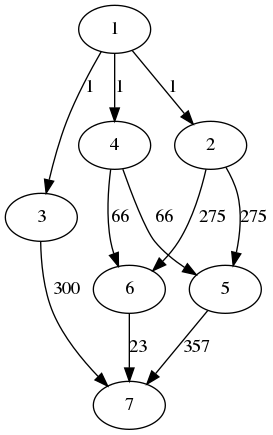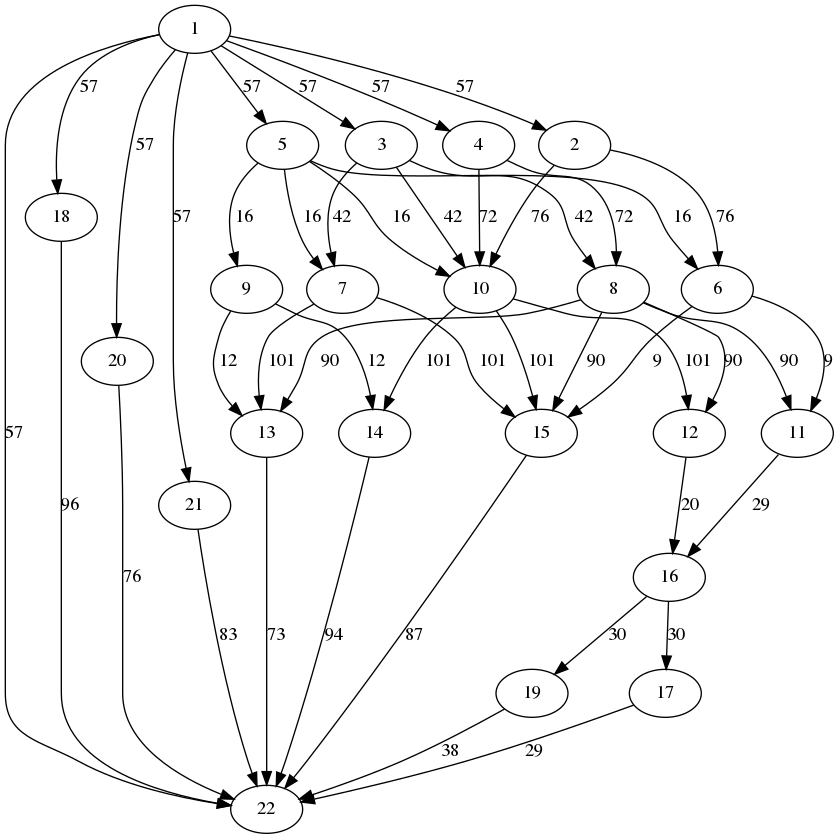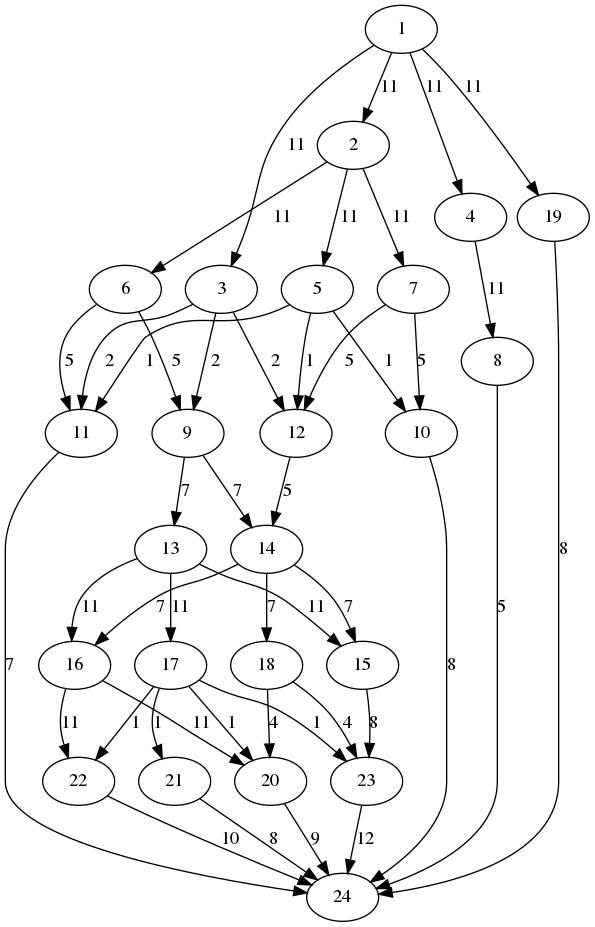Randomized Multi-DAG Task Generator for Scheduling and Allocation Research
dag-gen-rnd --- A randomized multiple Direct Acyclic Graph (DAG) task generator designed for scheduling and allocation research in parallel and multi-core computing.
dag-gen-rnd supports both command line (daggen-cli) and graphical user interface (daggen-gui; in development). This generator can be easily configured through a .json file and is highly extensible for other purposes.
Supported generation algorithms:
nfj: Nested fork-joinrnd: standard randomized DAG (layer-by-layer)rnd_legacy: default randomized DAG
The utilization generation is based on:
- UUnifast
- UUnifast-discard
Requirements
Python >= 3.7NetworkX >= 2.4Matplotlib >= 3.1.3pygraphviz >= 1.5numpy >= 1.17tqdm >= 4.45.0pyqt5(optional for GUI)
Installation on Linux
Install dependencies using apt:
$ sudo apt install python3-dev graphviz libgraphviz-dev pkg-config
and then install Python depedencies through requirements.txt:
$ pip3 install -r requirements.txt
(Optional) To use the GUI, you need to install Qt5 for Python:
$ sudo apt install python3-pyqt5
Configuration
Use the configuration file config.json to configure parameters.
(1) To generate single DAG task, set multi-DAG=false, then in single_task:
multi-DAG: falseset_number: number of tasksetsworkload: sum(C_i)
(2) To generate multi-DAG taskset, set multi-DAG=true, then in multi_task:
set_number: number of tasksetsutilization: total utilizationtask_number_per_set: number of tasks in each tasksetperiods: period set candidates
Usage
First, change the configurations in config.json. Then, depending on your perference:
1. Use the command line interface
$ python3 src/daggen-cli.py
2. Use the graphic user interface (development in process)
$ python3 src/daggen-gui.py
To use the generated DAGs, see the provided API in utlity.py which also gives an example.
Examples
Here are some simple examples of generated DAGs:
 |
 |
 |
|---|
or more complicated DAGs that can also be generated:
 |
 |
|---|
Known Issues
- This code is tested on Linux (Ubuntu) but not on Windows. There should not be too many problems as Python is good at cross-platform. However, the only potential issue is that the difference is in folder naming where Windows uses a backslash (
\), instead of a forwardslash (/). I will test it and make it compatitable in the future. - In some cases, the workload of the critical path could be larger than the period. The generator does not prohibit this case as this is not treated as a bug. The users need to be aware this and deal with them in their favority way, e.g. discarding.
Publications use the generator
- Shuai Zhao, Xiaotian Dai, Iain Bate. "DAG Scheduling and Analysis on Multi-core Systems by Modelling Parallelism and Dependency". Transactions on Parallel and Distributed Systems (TPDS). IEEE. 2022.
- Shuai Zhao, Xiaotian Dai, Iain Bate, Alan Burns, Wanli Chang. "DAG scheduling and analysis on multiprocessor systems: Exploitation of parallelism and dependency". In Real-Time Systems Symposium (RTSS), pp. 128-140. IEEE, 2020.
Citation
Please cite our work if you use this software in your work:
Xiaotian Dai. (2022). dag-gen-rnd: A randomized multi-DAG task generator for scheduling and allocation research (v0.1). Zenodo. https://doi.org/10.5281/zenodo.6334205
BibTex:
@software{xiaotian_dai_2022_6334205,
author = {Xiaotian Dai},
title = {{dag-gen-rnd: A randomized multi-DAG task generator
for scheduling and allocation research}},
month = mar,
year = 2022,
publisher = {Zenodo},
version = {v0.1},
doi = {10.5281/zenodo.6334205},
url = {https://doi.org/10.5281/zenodo.6334205}
}
License
This software is licensed under MIT. See LICENSE for details.



